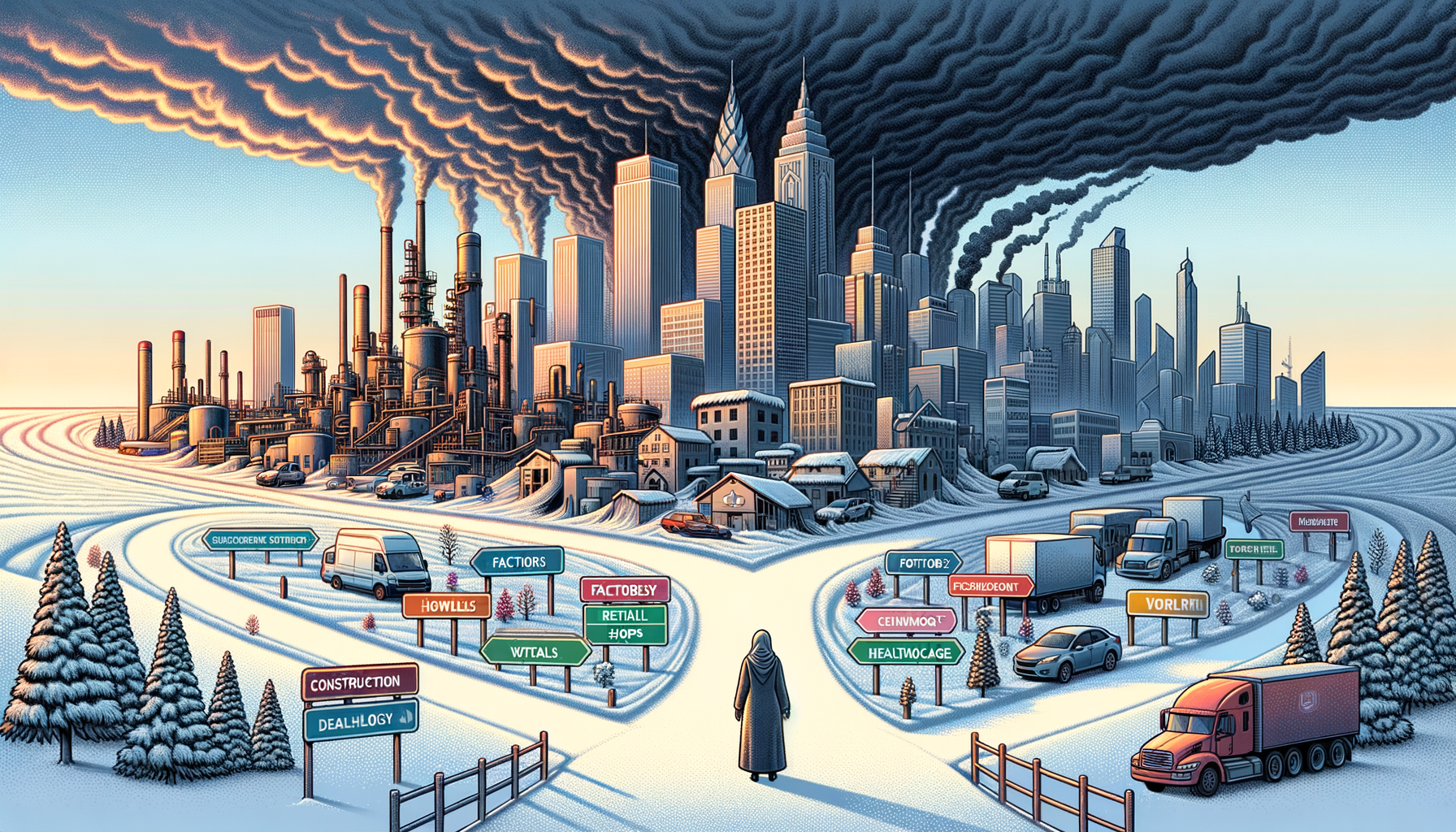“Unprecedented Rise in Layoffs: A Deep Dive into January’s Historic Low Hiring Rates”
Despite the optimism flooding the job markets earlier, an alarming number of layoffs were recorded in the first month of 2024. The employment landscape witnessed an unexpected turn as January’s hiring rate plunged to the lowest level ever noted for that month on record.
The economy started off the year on a rocky note with industries across the board witnessing a notable drop in new hires. Furthermore, the rate of dismissals and layoffs skyrocketed, representing new challenges for the economy, individuals, and organizations at large.
Since the tendency of businesses to hire new employees tends to be an economically significant metric, the downshift in hiring levels has earned its place as a significant point of interest for economic analysts and industry professionals alike.
The first month of the year is typically associated with an upbeat hiring tempo. Considering historical trends, January often depicts an influx of new opportunities in the job arena, as companies recover from the holiday season and embark on the implementation of new-year strategies. The unprecedented low level of hires in January 2024 curtails this trend significantly.
Alongside the bleak hiring round, a rising number of dismissals and layoffs reared its head. Job cuts, traditionally associated with the organization’s performance or macroeconomic conditions, hit an all-time high in the month. The compounding effect of fewer hires and increased layoffs presents a stark image of the current status of the job ecosystem and its likely trajectory.
This sudden plunge in jobs accompanied by a spiraling layoff rate paints a dismal picture, alluding to simmering challenges beneath the surface of the economy. Laying off employees is often a measure adopted by organizations under duress, suggesting either a strategy to mitigate operational costs or the lack of sufficient work.
When viewed in the light of specific industries, the transcription of the job market bleakness takes on individual tones. The sectors hit hardest by this dual job-market crisis were manufacturing, hospitality, and retail, industries historically prone to the negative impacts of economic downturns.
Retail, an industry that often operates on thin margins, has faced the brunt of the volatile economic scenario. Reduced consumer spending and cautious economic behavior have played their part in the retail sector slump. Manufacturing, on the other hand, has been grappling with worldwide supply chain disruptions and recruitment challenges, contributing to a precipitous downfall.
The hospitality sector, long-dependent on discretionary expenses and thereby vulnerable to fluctuations in consumer sentiment, has been negatively impacted by reduced consumer spending. The pandemic’s continued repercussions and the advent of new variants have led to cautious consumer behavior, contributing to a subdued demand.
Simultaneously, industries like construction fared comparatively better. Despite observing job cuts and lowered hiring rates, the construction industry has managed to stay afloat. Its relative resilience can be attributed to ongoing infrastructure projects and housing demands. Technology and healthcare industries also recorded less severe shocks due to a continued demand for digitization and healthcare services.
As the reality of an uncertain job market descends upon us, the question of how individuals, businesses, and governments should respond grows in importance. For job seekers, it’s now more vital than ever to stand out in a competitive market. Alongside honing one’s skillsets, there’s a pressing need for job applicants to display adaptability, resilience, and creativity. For the job market is no longer what it used to be, and the skills required to navigate it have changed accordingly.
Organizations, for their part, will need to focus on strategic decision-making. While layoffs might seem like an immediate solution for cost-cutting in financially challenging times, such actions can have long-term implications on the company’s reputation and its employees’ morale. Businesses will need to explore options that enable them to weather economic uncertainty, including cost optimization, business transformation, diversification of income streams, and potential digitization.
Governments play a crucial role during such tumultuous times. Policymakers need to carefully craft responses that balance supporting struggling businesses while safeguarding the livelihoods of citizens. Stimulus packages, comprehensive unemployment benefits, skills upgrading programs, and supporting industries with high growth potential can help alleviate some of the burdens of this economic downturn.
We stand amidst an economic whirlwind, with January’s record low hires and peak layoffs acting as stark reminders of the volatility of current times. The expectation now rests heavily on how the job markets react going forward and the pivotal dice role that governments, organizations, and individuals will play in this economic game. As we navigate these rough waters, one thing is clear – the resilience, ingenuity, and adaptability engendered by these challenging times will shape our economic narrative in the days to come.

